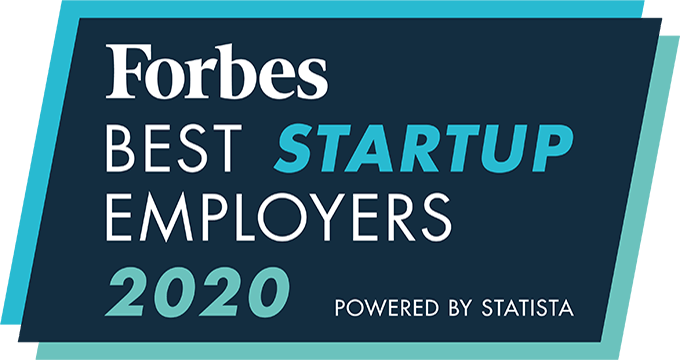This article was originally published on July 19, 2022 in ET Insights. Find the original publication here.
80% of global corporations recognize the importance of total talent visibility and talent management across all types of talent (FTE, Contingent, and Gig workforces). The importance of Total Talent Management (TTM) is a new paradigm shift for corporations in managing talent with total visibility across all of their divisions, geographies, and business units.
In a dynamic environment, managing talent necessitates navigating the many technologies at our disposal. And, a company’s ability to attract and retain people is just as important to its success as having the correct team.
There are far too many technologies that have not only helped but also considerably boosted talent to meet the expanding needs of today’s tech-driven world in response to the ever-evolving trends of the current decade. Sameer Penakalapati, CEO & Founder of Ceipal, an AI-powered SaaS platform that manages the entire talent acquisition process, offers his distinct thoughts on the development of talent acquisition management, the rising need for TTM, and removing obstacles to human resource management.
Q: How has Total Talent Management transformed the way in which firms handle human resources?
A: 91% of organizations rely on contingent labor to meet their talent requirements. However, HR has been laser-focused on permanent staffing, giving procurement ownership of contingent and contract workers. This approach has led to silos that cause operational inconsistencies, culture gaps, and a lack of uniformity in how employees are treated. One major problem faced by enterprises is the lack of visibility into supplier performance. Without proper data, decisions made by procurement teams become unreliable. Prior to the pandemic, organizations depended on an outsourced workforce. Now the gig economy is growing and accelerating the adoption of technology when it comes to the search for talent.
Total Talent Management (TTM) emerged as a holistic approach to managing both permanent and temporary workforces under a single umbrella. The concept of TTM has become more popular within the last five years. It enables enterprises to bridge organizational silos and brings complete visibility into the system. With TTM solutions, all multi-departmental stakeholders channel into a unified talent management program through seamless integration between Applicant Tracking Systems (ATS) and Vendor Management System (VMS) systems. This integrated approach for talent acquisition provides open communication between silos and ensures a connected data flow. It eliminates the duplication of efforts and mitigates risk. We have observed a 400% increase in client candidate placements within one year of adopting the total talent management model.
Q: What are the major barriers for organizations to implement a total talent management strategy? How has the HR industry reacted to the convergence of talent and technology?
A: Even though there is great momentum when it comes to the adoption of technologies to find, engage, and retain talent, organizations still struggle to kick-start the journey toward Total Talent Management. The most critical barrier to Total Talent Management is the lack of realistic implementation strategies. Building a centralized talent strategy is a big shift for the C-suite, as it requires multiple stakeholders across departments to align with the plan. While fear of change is a primary constraint for many decision-makers, lack of resources and limited budgets also stop organizations from adopting TTM strategies.
Since 75% of the candidate pool is passive, HR leaders now realize that conventional methods of manually recruiting won’t help them to attract the majority of talent. This shift is forcing the HR industry to embrace an omnichannel approach to finding talent. So, HR leaders are now much more open to finding talent with technology than they were in the last decade. With the acceleration of digital transformation, technology is rapidly becoming the backbone of the recruitment industry.
Q: How will talent acquisition management evolve in the current decade?
A: According to Monster, 99% of Fortune 500 companies are using some form of talent acquisition and talent management platforms.* Adoption of talent automation platforms by SMBs in service sectors is also at an all-time high. The future is all about unifying all talent sources and all talent types to create a single talent source. Those charged with hiring must assess talent needs for the next 6-12 months and make a plan to engage qualified talent. This will enrich an organization’s talent container with relevant information and make its talent database more relevant than ever. Talent engagement and employer branding play both key roles in curating and acquiring talent for the future.
(*source: https://hiring.monster.com/resources/small-business-hiring/hiring-process/talent-acquisition/)
Q: Do you believe that with solutions such as TTM, human resource management will be ready to take on future shocks?
A: Total talent management enables the curation and management of all types of talent pools (full-time, contingent, freelance) from internal recruiters, staffing suppliers, and external candidate database sources. In most business setups, full-time and contingent workforces are managed by siloed teams (HR & Procurement), which creates a lot of inefficiencies in terms of pooling all available talent into a single source. When talent becomes scarce, TTM’s ability to curate and manage an entire talent pool becomes the only way to mitigate future economic shocks and continue building a strong pool of qualified candidates. When times get tough, your dependence on external talent sources is critical. TTM can empower any organization with an existing talent pool that’s already engaged and ready to deploy. Talent is the new gold, and it must be curated, enriched, and engaged to ensure future success for any business.









